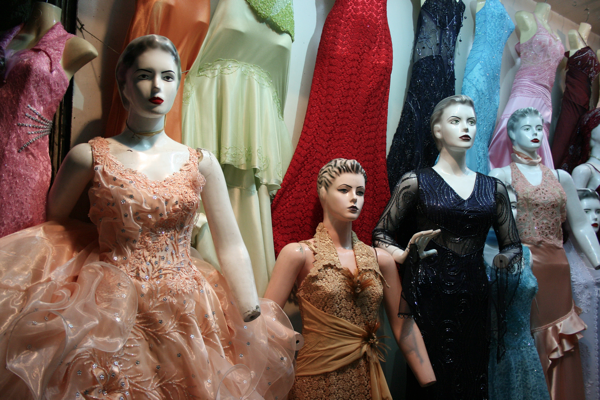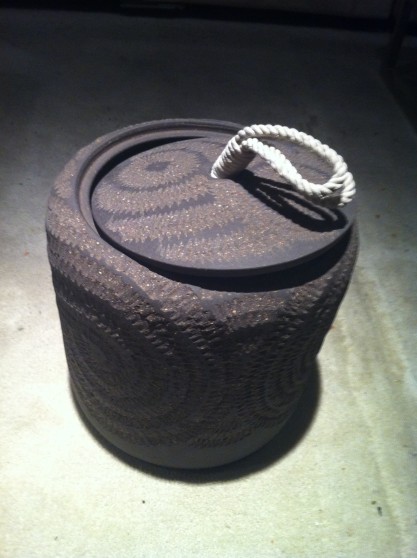Beijing, 31 March 2013
On this Easter Sunday, the newspapers (the English-speaking ones at least) have been afroth with articles about various Easter traditions. One of these is of course the Easter egg. I was particularly struck by an article on the BBC site about an Indian restaurant in the UK having made a series of chocolate Easter eggs with a mix of chocolate and three hideously hot chilli peppers: a ghost chilli, a scotch bonnet and a habanera chilli.
The makers boasted that the resulting chocolate registered 1 million on the Scoville scale of hotness. I have written a previous post on the use of hot spices; the readers of that post can imagine my horror when I read this article. But as I read and mentally shook my head, my mind drifted back to one of my earliest memories. I am a small child, back in Africa, it is Easter Sunday, we are in the garden. I am tugging desperately on my mother’s hand, I want to follow my older brother and sisters who are running through the garden looking for Easter eggs hidden by my parents. I guess she wanted to guide me to where they had hidden my eggs. I suppose she eventually was able to drag me in the right direction and I “found” the eggs, but that part didn’t imprint itself in my memory.
We weren’t looking for chocolate eggs. We were looking for real eggs, boiled hard and painted by us children. This was the family tradition; we children painted a couple of eggs each, and then our parents hid them for us to find. A trawl through the internet shows that the painting of Easter eggs is not a dead art.
although I think the following pictures give a better idea of what our eggs no doubt looked like and how they were painted.
Once we left Africa, we no longer had a garden in which to hide the eggs. Anyway, I think we adopted the new ways of doing things and bought chocolate eggs. One could buy very fancy chocolate eggs
along with fancy chocolate rabbits
But our Easter eggs tended to be the more modest-sized ones wrapped in coloured silver paper. My mother would pile them up on a plate at the centre of the table and we would nibble on them during Easter and for days (and days …) thereafter.
I have to say, I’m not terribly, terribly fond of chocolate. I’ve never eaten very much of it. I don’t eat it at Easter any more. Apart from dutifully accepting chocolate sweets when someone hands them around, I sometimes eat a bar of chocolate with hazelnuts; I like the nut and chocolate combination.
And from time to time, when I’m in France and have baguettes at hand I will eat a piece of chocolate and baguette.
It’s really delicious, by the way. When my French grandmother was feeling somewhat flush, she would buy a bar of chocolate and give it to us grandchildren with bread at teatime. Mm-mm, good!
Luckily, my wife is also not a great eater of chocolate, although she is definitely fonder of chocolate cake than I am. When we go to a restaurant and chocolate cake is on the menu she will sometimes crack and order it.
She also often ate the Italian equivalent of chocolate and baguette when she was young: Nutella spread on a piece of bread. Like my grandmother, her mother would serve it as a snack at teatime.
About 15-20 years ago, we began to notice growing chatter in the media about going back to the fundamentals. We were told we should move closer to the way the Mesoamericans consumed chocolate before the Spaniards arrived, as a whipped-up drink of water, chocolate, spices and vanilla:
We didn’t necessarily have to go the whole way, we were informed, but we could eat chocolate without all the things Europeans had added over the centuries: sugar, milk, nuts and who knows what else. We read that it was much better for you that way. It has delicate tastes which linger on the tongue. It also contains chemicals which make you happy, which are good for the heart, which give you more sex drive. Well! After listening to a lot of this kind of hype we noticed one day in a shop in Vienna some very smartly packaged “modern” chocolate produced by Lindt, the luxury Swiss chocolate and confectionery company.
On an impulse, we bought a bar. After some debate, we decided not to go for the 100% pure chocolate, but rather to start with a 70% mix. We took this precious material back home, we opened it reverentially, and tried it.
I have to say, it was no great shakes. We didn’t feel our mouths being overcome by delicately intoxicating tastes, we didn’t feel any happier, we didn’t … Maybe our tickers worked better but we couldn’t tell. For those interested readers there is another BBC article reviewing the state of play on the topic.
I think we’ll just eat our chocolate the way we always have. Perhaps the Europeans were on to something when they added all those other things.
____________________________________________
Chocolate and chilies: http://img.thesun.co.uk/multimedia/archive/01701/28_03_2013_1701553a.jpg
Painted Easter eggs: http://www.wallcoo.com/holiday/2007_easter_wallpaper_1280x1024/images/%5Bwallcoo.com%5D_Easter_wallpaper_1280x1024_1280Easter013.jpg
Children painting eggs-1: http://3.bp.blogspot.com/_d7Dqr_RDyks/Sb7jFCSi81I/AAAAAAAACfA/MDonvPeRcjg/s400/2009-03-16%20Egg%20Painting.jpg
Children painting eggs-2: http://www.momdademmaandkenny.com/wp-content/uploads/2010/04/wpid1919-03-28-2010-Egg-Painting-and-the-Maloneys-Emma-and-Kenny-0431-D700-100328.jpg
Chocolate Easter egg-fancy: http://www.motleyhealth.com/wp-content/uploads/2010/04/Chocolate-Easter-Egg.jpg
Chocolate rabbit: http://4.bp.blogspot.com/_mv60VL07p2s/S7IfXJxv3SI/AAAAAAAACaM/rk8X4Wg9lYg/s1600/080304_JTorres_Bunny_sitt.jpg
Chocolate Easter eggs-typical: http://www.theramblingepicure.com/wp-content/uploads/2011/04/Easter-Eggs-choc.jpg
Chocolate bar with hazelnuts: http://us.123rf.com/400wm/400/400/ivonnewierink/ivonnewierink1001/ivonnewierink100100240/6245932-barre-de-chocolat-avec-noisettes-isole-sur-blanc.jpg
Baguette with chocolate: http://a142.idata.over-blog.com/600×449/2/90/63/97/Autrefois-./Chocolat/Le-Bon-Chocolat–13-.JPG
Chocolate cake: http://culinaria.tudo-gratis.com/wp-content/uploads/2009/11/bolo-do-lino.jpg
Nutella on bread: http://s017.radikal.ru/i430/1110/d7/444c78d56338.jpg
Mesoamerican-pic: http://www.athenapub.com/nuttal1x.GIF
Lindt excellence: http://1.bp.blogspot.com/-6PGNUwin05M/TaZARK7Vj6I/AAAAAAAAAXo/JtIkvQUGiSs/s1600/chocolate.jpg
Cocoa pods: http://upload.wikimedia.org/wikipedia/commons/thumb/e/e0/Cocoa_Pods.JPG/400px-Cocoa_Pods.JPG







































































